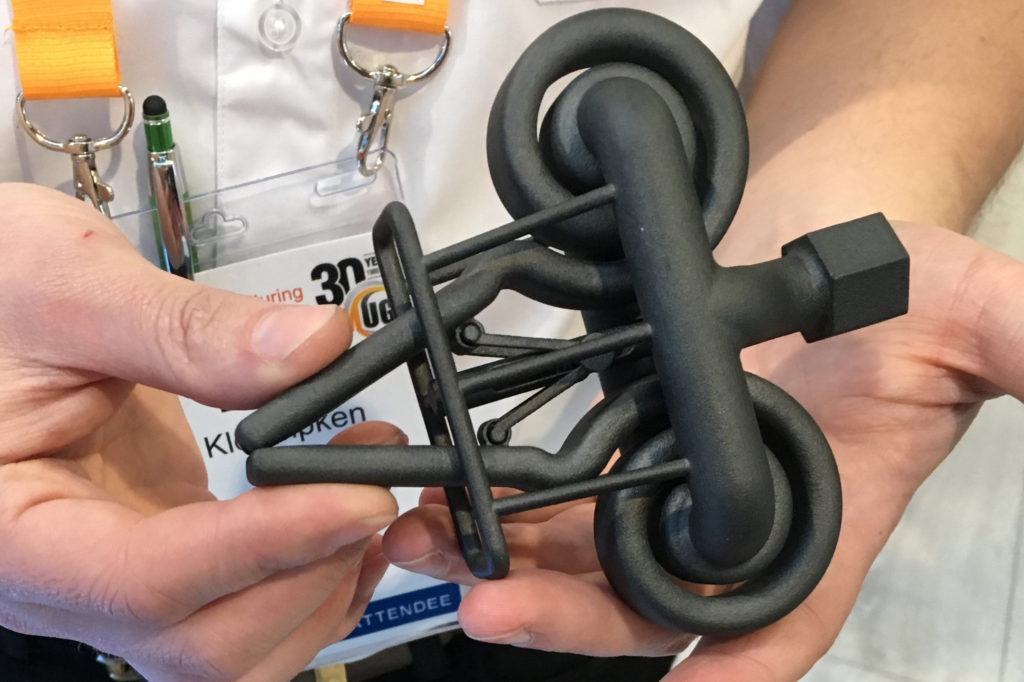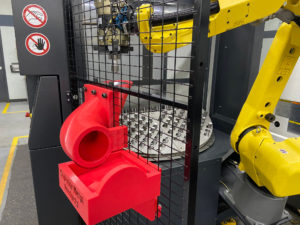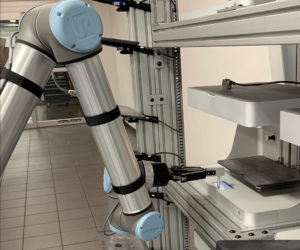This article by Stephanie Hendrixson originally appeared in Modern Machine Shop magazine.
Robotic automation and additive manufacturing (AM) both have the potential to transform how parts get made and how businesses operate. The addition of a cobot or other robot allows a business like a machine shop to devote less human attention to tasks such as loading and unloading workpieces; this move might then lead that business to pivot to lights-out production for greater productivity. Likewise, a manufacturer might add 3D printing capability to make jigs and fixtures, but later discover its applicability for producing end-use parts and find new business opportunities there.
Yet robots and additive manufacturing do not run in parallel tracks. Their paths frequently intersect, often to great advantage. Here are four ways that robots and 3D printing support and enable each other:
1. 3D Printed End-of-Arm Tooling (EOAT)
Vacuum grippers, jaws and other end-of-arm tools for robots are a perfect application for the design freedoms 3D printing offers. 3D printing makes it possible to build functional grippers in just one piece, incorporating air lines, live hinges and other complex features without assembly (see below). Topology optimization strategies or simply the chance to create robot tooling out of plastics versus metals can provide weight savings, preserving more of the robot’s payload for the parts. Bringing robot tooling in-house via 3D printing is also an affordable option for producing these items, with potential time savings to boot.

2. 3D Printed Off-Robot Accessories
Of course, the robot end effector is only one piece of the overall system needed to automate a given operation. Custom trays, jigs, fixtures and more may be needed to serve up parts in just the right way to the robot, or to collect parts after they have been processed. Here again, 3D printing provides a fast, simple way of building creative solutions around the robot automation which can be done in-house with an affordable polymer printer.

3. Robot-Tended 3D Printers
There are also ways for 3D printing to benefit from integration with robotics. The additive manufacturing process consolidates various workflow steps into one machine that can run unattended for long periods of time. Rather than time shifts and adjust schedules to accommodate 3D printer unloading, manufacturers can use robots to remove finished parts, place new build plates, and continue printing even when no humans are present.

4. Robots As 3D Printing Systems
In addition to being a valuable means of moving parts and supplies, robots can also serve as the method for applying material in a 3D printing process. Options for robotic 3D printing include polymer extrusion, wire arc additive manufacturing, metal powder directed energy deposition (DED) and even heat-free supersonic deposition. A 3D printing head mounted on a robot arm has more freedom of motion than one fixed in a gantry, and can enable support-free 3D printing and complex geometries that might not otherwise be possible. (The reverse is also possible — that is, keep the printhead stationary but mount the build plate on a robotic arm for geometric freedom.) Robots can also be mobile, and can achieve a much larger effective build volume by being mounted on a track or moved on site to produce structures in situ. Multiple 3D printing robots can even be coordinated to print together, operating in a swarm or a choreographed dance to speed production and create large parts more quickly.



